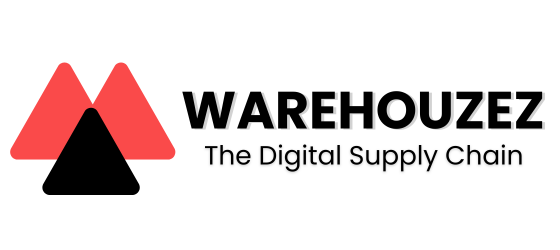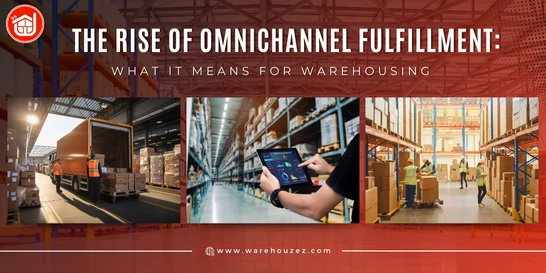Warehouse Inventory Tracking Systems: Choosing the Right Solutions
Warehouse Inventory Tracking Systems: Choosing the Right Solutions
In today's technologically-driven world of warehousing, having a reliable inventory management system is necessary for the smooth functioning of supply chain operations. It helps streamline the process of managing inventory, allowing businesses to accurately track stock levels, reduce human errors, and ultimately boost productivity.
However, with a plethora of options available on the market, choosing the right warehouse inventory management software solution for your business can be overwhelming. There are several considerations to keep in mind while selecting the best warehouse inventory management solutions, like highlighting the importance of compatibility, scalability, real-time tracking capabilities, and user-friendliness. Whether you are a small startup or a large enterprise, finding the right software solution can certainly enhance your warehouse efficiency and contribute to your company's success.
In this particular blog post, we will explore the factors to consider when choosing the right inventory tracking system and highlight some of the top solutions available today. By the end of this blog, you will have the knowledge necessary to make an informed decision. So let's get started.
What are Warehouse Inventory Tracking Systems?
Warehouse inventory tracking systems are sophisticated software programmes that enable businesses to efficiently manage and track their inventories in warehouses. In the most inclusive sense, inventory management refers to the process of overseeing and controlling all aspects of a company's stock in storage facilities. It involves monitoring stock levels, conducting regular audits, and ensuring the accurate recording of data.
Warehouse inventory management software systems play an important role in this process by providing real-time visibility of stock levels, locations, and movements. These systems utilize barcode and RFID technology to log and track items as they move in and out of the warehouse facility. By automating these processes, these state-of-the-art software solutions help businesses reduce errors, optimize storage space, enhance order fulfillment, and minimize stockouts or overstock situations. They are especially useful for businesses dealing with large product volumes.
In the market, there are several types of warehouse inventory tracking systems available, ranging from basic cloud and standalone systems to comprehensive enterprise resource planning (ERP) systems that integrate inventory management with other business functions.
Key Factors to Consider When Choosing A Warehouse Inventory Management Software
As businesses strive to stay competitive and meet customer demands, implementing robust warehouse inventory management software becomes imperative.
Let's explore the key considerations businesses need to weigh before selecting the most suitable software solution for their inventory management needs.
Flexibility and Scalability
When choosing warehouse inventory management software, it is necessary to consider its flexibility and scalability. It should be able to adapt to your specific warehouse needs and should be able to handle increasing volumes of inventory as your business grows. So, a tip here is to look for solutions that come with customizable features and configurations, allowing you to tailor them to your unique requirements.
Integration with Existing Systems
Another crucial factor to take into consideration is the software's ability to integrate with your existing systems. This includes your accounting software, ERP systems, order management systems, WMS, and any other systems you use to manage your business operations. Choosing a software suite that can seamlessly integrate with your existing systems will certainly result in smoother data flows and more efficient processes.
Barcode and RFID Technology Integration
There's no denying the fact that accurate identification and tracking of products are important for properly managing inventories. Therefore, it is crucial to choose software that seamlessly integrates with barcode and RFID technologies. This will enable you to easily and efficiently track stock movements, perform regular stock counts, and achieve real-time visibility of your inventories.
Real-time Monitoring and Reporting Capabilities
The software suite should provide real-time monitoring and reporting capabilities to give you accurate and up-to-date insights into your inventories. It should allow you to track stock levels, monitor stock movements, and generate reports on various aspects of inventory management such as stock availability, stock turnover, and order fulfillment. This will help avoid overstock and out-of-stock situations.
User-friendly Interface
When selecting an inventory management system, it is incredibly important to prioritize a user-friendly interface that is intuitive and easy to navigate. Employees should be able to quickly learn how to use the software system without extensive training or confusion. Additionally, it should be easy to implement and integrate with existing systems, minimizing downtime and disruption to warehouse operations.
Popular Warehouse Inventory Tracking Solutions in the Market
Let's take a look at the popular warehouse inventory tracking solutions in the market:
- Inventory Management Systems
- Warehouse Management Systems
- Barcode Scanning and RFID Tracking Technologies
- GPS Technology
- Mobile Applications
Steps for Choosing the Right Inventory Management System
There are several steps involved in choosing the right inventory management system. Let's take a look at them:
Assessing Warehouse Needs and Goals
The first step in choosing the ideal inventory management system is to clearly define the needs and goals of your warehouse. This includes considering factors such as the size of your warehouse, the number and types of products you handle, the complexity of your operations, and any specific challenges or requirements unique to your business.
Researching Available Solutions
Once you have a clear understanding of your warehouse needs and goals, it's time to research the available inventory tracking solutions in the market. This can involve online searches, reading reviews, and seeking recommendations from industry peers or experts. It's important to consider factors such as system compatibility with existing technology, scalability, ease of use, and support offered by the vendor.
Evaluating System's Features, Functionalities, and Capabilities
After shortlisting potential software programmes, it is crucial to evaluate their features and capabilities to determine if they align with your warehouse needs. This evaluation should include examining core functionalities, such as inventory tracking, order management, warehouse management, and reporting, as well as any additional features that may be important for your specific business requirements, such as barcode scanning or integration with e-commerce platforms.
Comparing Pricing and Return on Investment
Price is an important factor to consider when choosing an inventory management system. You should evaluate the upfront costs, ongoing fees, and any additional expenses, such as training or customization. While it is crucial to find a system that fits your budget, it is equally important to assess the expected return on investment (ROI). This involves considering the potential time and cost savings, increased efficiency and accuracy, and improved customer satisfaction that the system can provide. Comparing the pricing and ROI of different inventory tracking solutions can help you make an informed decision.
Concluding Remarks
To offer concluding remarks, choosing the best warehouse inventory tracking software solution is crucial for businesses to achieve efficiency, accuracy, and productivity in their operations. By evaluating the specific needs of your warehouse, understanding the features and capabilities of different solutions, and considering your budget and scalability requirements, you can make an informed decision. Whether you opt for barcode scanning systems, RFID technology, or cloud-based solutions, implementing the right warehouse inventory management software will streamline your processes, reduce errors, and ultimately drive success in your business.



